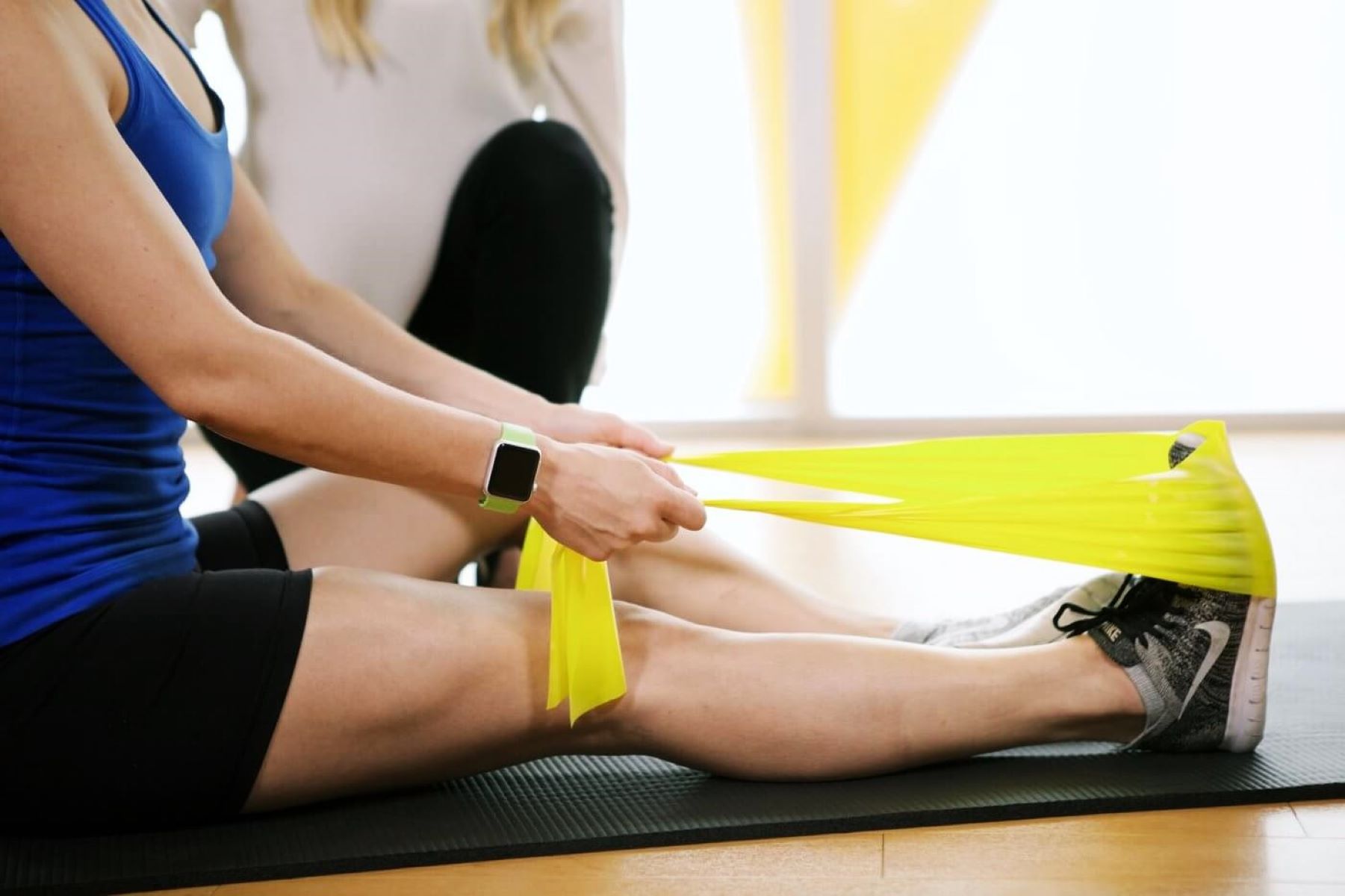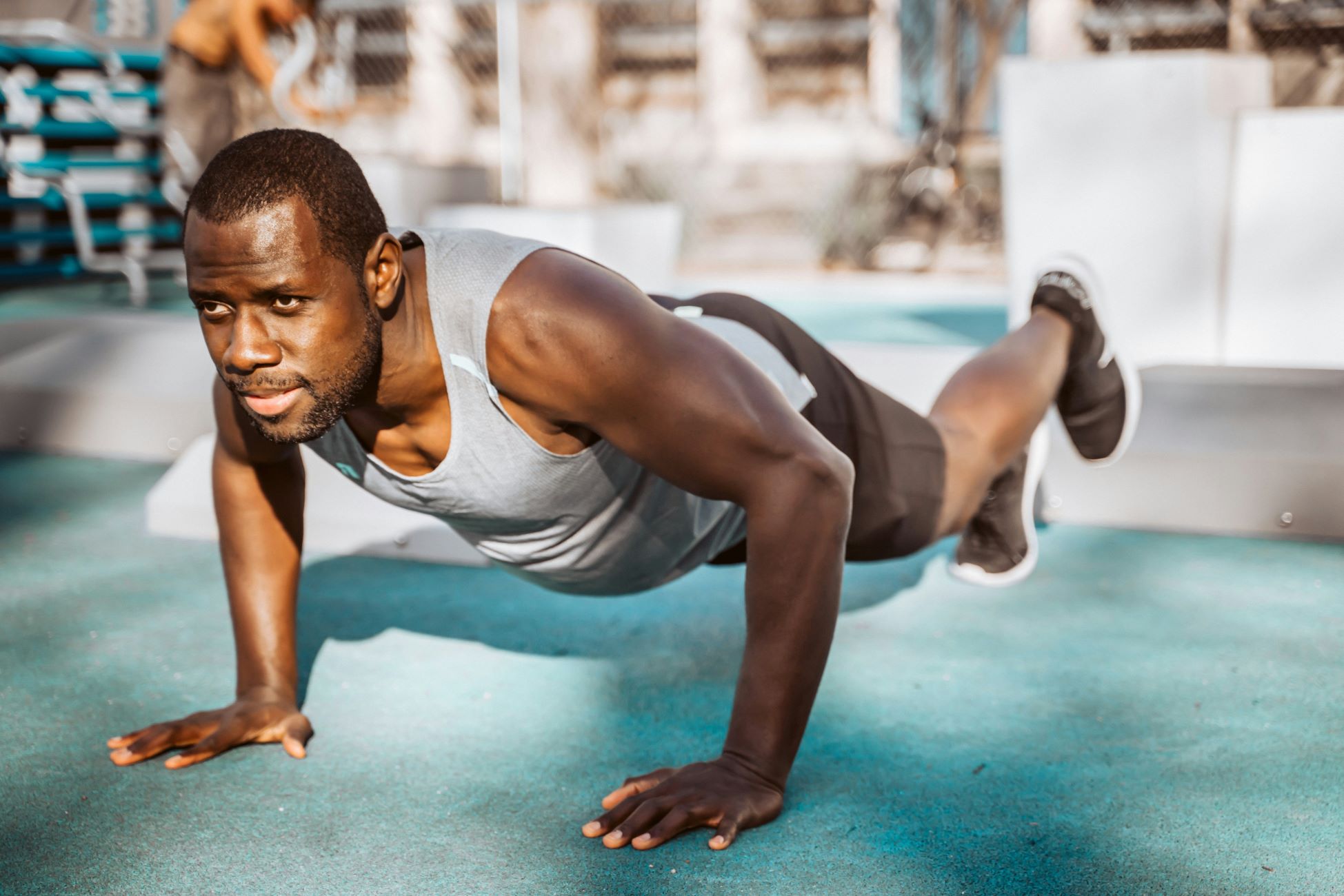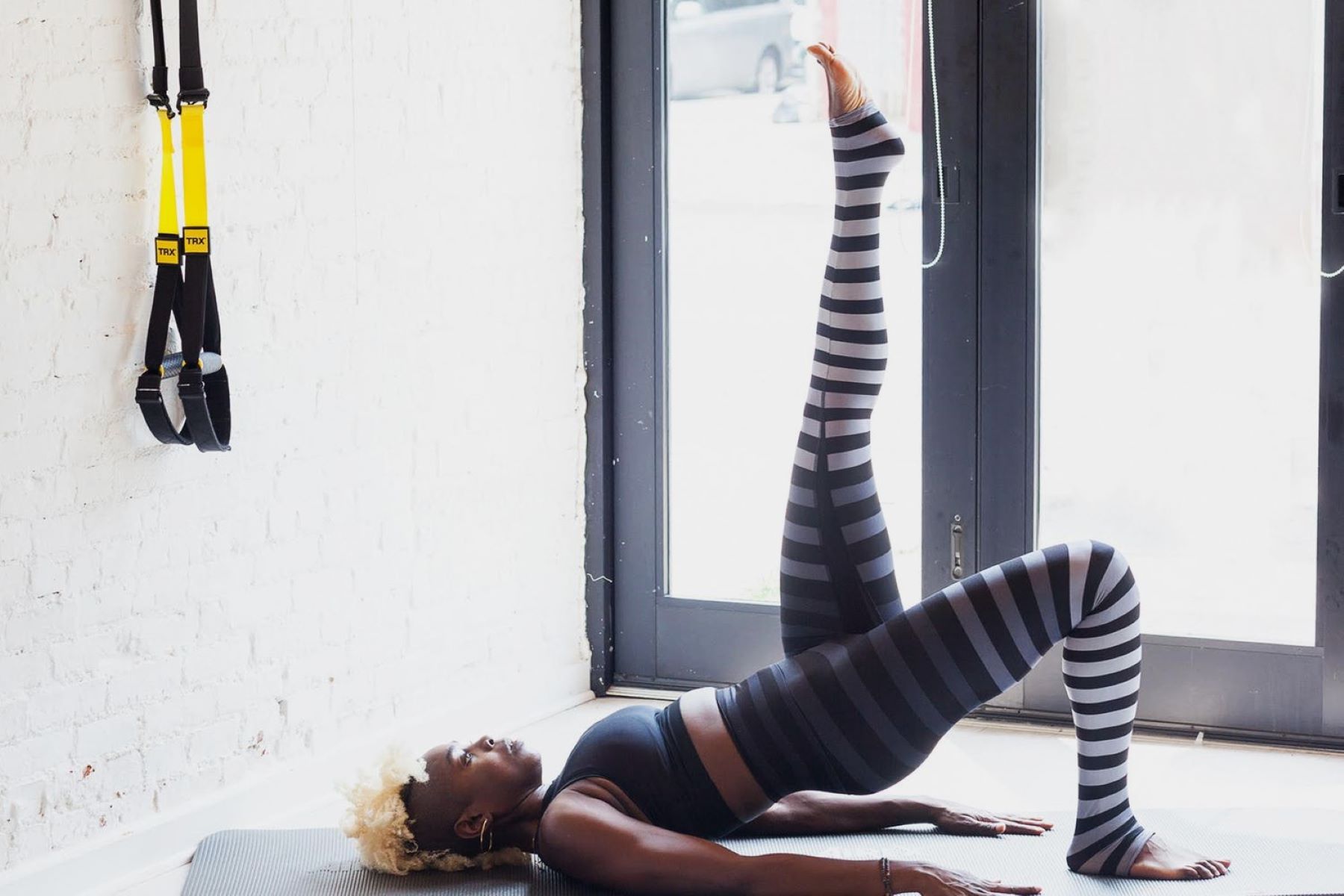Home>Health & Nutrition>Injury Prevention>7 Easy Exercises To Strengthen Your Joints


Injury Prevention
7 Easy Exercises To Strengthen Your Joints
Published: February 25, 2024
Strengthen your joints and prevent injuries with these 7 easy exercises. Improve joint stability and flexibility for better injury prevention.
(Many of the links in this article redirect to a specific reviewed product. Your purchase of these products through affiliate links helps to generate commission for Therunningadvisor.com, at no extra cost. Learn more)
Table of Contents
Introduction
Taking care of your body is essential for maintaining a healthy and active lifestyle. One crucial aspect of this is ensuring the strength and flexibility of your joints. Strong joints are vital for everyday movements, physical activities, and injury prevention. Whether you're an athlete, a fitness enthusiast, or simply someone who wants to maintain their mobility, incorporating joint-strengthening exercises into your routine can make a significant difference in your overall well-being.
In this article, we will explore seven easy and effective exercises designed to strengthen your joints. These exercises target key areas of the body, including the knees, shoulders, ankles, hips, wrists, elbows, and neck. By incorporating these exercises into your regular workout regimen, you can improve joint stability, reduce the risk of injuries, and enhance your overall physical performance.
It's important to note that these exercises are suitable for individuals of all fitness levels. Whether you're a beginner or have been active for years, these joint-strengthening exercises can be tailored to meet your specific needs and abilities. Additionally, these exercises can be performed in the comfort of your own home, requiring minimal equipment and space.
By dedicating just a few minutes each day to these exercises, you can proactively support the health and resilience of your joints. As we delve into each exercise, you'll discover the proper techniques and tips for maximizing their benefits. So, let's embark on this journey to strengthen and protect your joints, empowering you to move with confidence and vitality.
Exercise 1: Knee Extensions
Knee extensions are a fundamental exercise for strengthening the quadriceps muscles and supporting the stability of the knee joint. This exercise is particularly beneficial for individuals recovering from knee injuries or looking to prevent them. Additionally, it can contribute to improved balance and overall lower body strength.
How to Perform Knee Extensions:
- Initial Position: Begin by sitting on a sturdy chair with your back straight and feet flat on the floor.
- Execution: Lift one leg straight out in front of you, ensuring that your knee is fully extended. Hold this position for a few seconds, feeling the contraction in your quadriceps.
- Return: Slowly lower your leg back to the starting position.
- Repeat: Perform the same movement with the opposite leg.
Tips for Success:
- Maintain a controlled and deliberate movement throughout the exercise to maximize its effectiveness.
- Focus on engaging your quadriceps muscles as you extend your knee, emphasizing the contraction.
- Avoid locking your knee joint at the top of the movement to prevent unnecessary strain.
Benefits of Knee Extensions:
- Strengthens Quadriceps: By targeting the quadriceps muscles, knee extensions help build strength and stability around the knee joint.
- Improves Mobility: Regular practice of knee extensions can contribute to improved range of motion in the knees, enhancing overall mobility.
- Injury Prevention: Strengthening the muscles around the knee joint can reduce the risk of common knee injuries, such as strains and sprains.
- Enhances Functionality: Strong quadriceps are essential for various daily activities, such as walking, climbing stairs, and standing from a seated position.
Read more: 6 Easy Strength Exercises For Older Runners
Precautions:
- Individuals with existing knee conditions or injuries should consult a healthcare professional before performing knee extensions to ensure it is safe for their specific situation.
- It's important to use a chair or surface that provides stability and support during the exercise to minimize the risk of falls or imbalance.
Incorporating knee extensions into your workout routine can contribute to the overall health and resilience of your knee joints, supporting your active lifestyle and promoting injury prevention. Whether you're recovering from an injury or aiming to maintain strong and stable knees, this exercise is a valuable addition to your fitness regimen.
Exercise 2: Shoulder Rotations
Shoulder rotations are a simple yet effective exercise for enhancing the flexibility and strength of the shoulder joints. These rotations target the muscles and tendons surrounding the shoulders, promoting improved range of motion and reducing the risk of stiffness and discomfort. Whether you're an athlete, a fitness enthusiast, or someone seeking to alleviate shoulder tension, incorporating shoulder rotations into your routine can yield significant benefits.
How to Perform Shoulder Rotations:
- Initial Position: Stand with your feet shoulder-width apart and your arms relaxed at your sides.
- Execution: Raise your arms to shoulder level, extending them out to the sides. Begin making circular motions with your shoulders, rotating them forward in a smooth and controlled manner. Aim to maintain a consistent and fluid motion throughout the exercise.
- Reverse Direction: After completing several rotations forward, switch to rotating your shoulders in a backward motion, continuing the circular movements with the same fluidity and control.
- Repetition: Perform a set number of rotations in each direction, gradually increasing the range of motion as your shoulders become more accustomed to the exercise.
Tips for Success:
- Focus on maintaining proper posture and alignment throughout the exercise, keeping your core engaged and your movements controlled.
- Avoid tensing your neck and upper back during the rotations, allowing the motion to originate from the shoulder joints.
- Gradually increase the size of the rotations as your shoulders become more limber, aiming to achieve a full range of motion without discomfort.
Benefits of Shoulder Rotations:
- Enhanced Flexibility: Regular practice of shoulder rotations can contribute to increased flexibility in the shoulder joints, allowing for improved movement and reduced stiffness.
- Joint Mobilization: The circular motion of shoulder rotations helps mobilize the shoulder joints, promoting better circulation and lubrication within the joint capsules.
- Injury Prevention: By strengthening the muscles and tendons surrounding the shoulders, this exercise can aid in preventing common shoulder injuries and discomfort.
- Postural Support: Strong and flexible shoulders are essential for maintaining proper posture and alignment, reducing the risk of strain and tension in the upper body.
Read more: 6 Easy Strength Exercises For Older Runners
Precautions:
- Individuals with existing shoulder conditions or injuries should approach shoulder rotations with caution, adjusting the range of motion to avoid exacerbating discomfort.
- It's important to perform shoulder rotations in a controlled manner, avoiding abrupt or jerky movements that could strain the shoulder joints.
Incorporating shoulder rotations into your regular exercise routine can contribute to the overall health and functionality of your shoulder joints. Whether you're looking to enhance your athletic performance, alleviate shoulder tension, or simply maintain joint flexibility, this exercise offers a straightforward and impactful way to support the well-being of your shoulders.
Exercise 3: Ankle Circles
Ankle circles are a simple yet effective exercise that targets the flexibility and strength of the ankle joints. These circular movements help improve mobility, reduce stiffness, and enhance the stability of the ankles, making them an essential addition to any comprehensive joint-strengthening routine.
How to Perform Ankle Circles:
- Initial Position: Sit comfortably on a chair or the edge of a bed, ensuring that your back is straight and your feet are flat on the floor.
- Execution: Lift one foot off the ground and extend your leg in front of you. Begin by rotating your ankle in a circular motion, moving clockwise to create a full circle with your foot. Focus on maintaining a smooth and controlled movement throughout the rotation.
- Reverse Direction: After completing several clockwise rotations, switch to rotating your ankle in a counterclockwise direction, ensuring that the circular motion is consistent and deliberate.
- Repetition: Perform a set number of rotations with one foot before switching to the other, gradually increasing the range of motion as your ankles become more limber.
Tips for Success:
- Keep your movements gentle and controlled, avoiding any sudden or jerky motions that could strain the ankle joints.
- Focus on maintaining proper posture and alignment as you perform the ankle circles, engaging your core for stability.
- Gradually increase the size of the circles as your ankles become more flexible, aiming to achieve a full range of motion without discomfort.
Benefits of Ankle Circles:
- Improved Flexibility: Regular practice of ankle circles can help increase the flexibility and range of motion in the ankle joints, allowing for smoother and more natural movement.
- Enhanced Stability: By engaging the muscles and tendons surrounding the ankles, this exercise contributes to improved stability and balance, reducing the risk of ankle-related injuries.
- Alleviation of Stiffness: Ankle circles can help alleviate stiffness and discomfort in the ankles, particularly beneficial for individuals who spend extended periods sitting or standing.
- Support for Daily Activities: Strong and flexible ankles are essential for various daily activities, such as walking, climbing stairs, and maintaining balance, making ankle circles a valuable exercise for overall functionality.
Read more: 6 Easy Strength Exercises For Older Runners
Precautions:
- Individuals with existing ankle conditions or injuries should approach ankle circles with caution, adjusting the range of motion to avoid exacerbating discomfort.
- It's important to perform ankle circles in a controlled manner, ensuring that the movements are gentle and do not cause strain on the ankle joints.
Incorporating ankle circles into your regular exercise routine can significantly contribute to the overall health and resilience of your ankle joints. Whether you're looking to enhance your mobility, reduce stiffness, or proactively support the strength of your ankles, this exercise offers a straightforward and impactful way to care for this vital joint.
Exercise 4: Hip Abductions
Hip abductions are a valuable exercise for targeting the muscles of the outer thighs and hips, known as the hip abductors. This exercise is particularly effective in strengthening the hip joints and improving overall lower body stability and functionality. Whether you're an athlete aiming to enhance your performance or someone seeking to prevent hip-related discomfort, incorporating hip abductions into your workout routine can yield significant benefits.
How to Perform Hip Abductions:
-
Initial Position: Begin by standing upright with your feet hip-width apart and your hands resting on a stable surface for support, such as a countertop or the back of a sturdy chair.
-
Execution: Shift your weight onto one leg while keeping the other leg straight. Slowly lift the straight leg out to the side, away from the midline of your body, maintaining a slight bend in the supporting leg. Focus on engaging the muscles of the outer hip and thigh as you perform this movement.
-
Return: Lower the lifted leg back to the starting position in a controlled manner, ensuring that the movement is deliberate and steady.
-
Repeat: Perform the same movement with the opposite leg, lifting it out to the side while maintaining proper form and alignment.
Tips for Success:
- Maintain a stable and upright posture throughout the exercise, avoiding leaning excessively to one side.
- Focus on engaging the hip abductor muscles to initiate the movement, emphasizing the controlled lift and descent of the leg.
- Keep the supporting knee slightly bent to provide stability and reduce the risk of strain on the joints.
- Gradually increase the range of motion as your hip abductors become stronger, aiming to lift the leg to a comfortable height without compromising form.
Benefits of Hip Abductions:
- Strengthening the Hip Abductors: By targeting the muscles responsible for moving the leg away from the body, hip abductions help build strength and stability in the hip joints, supporting various movements and activities.
- Improved Hip Joint Functionality: Regular practice of hip abductions can contribute to enhanced mobility and range of motion in the hips, promoting fluid and efficient movement patterns.
- Injury Prevention: Strengthening the hip abductors can aid in reducing the risk of common hip-related injuries and discomfort, particularly beneficial for individuals involved in physical activities or those experiencing hip instability.
- Enhanced Lower Body Stability: Strong hip abductors play a crucial role in maintaining balance and stability during daily movements, such as walking, standing, and transitioning between positions.
Read more: 6 Easy Strength Exercises For Older Runners
Precautions:
- Individuals with existing hip conditions or injuries should approach hip abductions with caution, adjusting the range of motion to avoid discomfort or strain.
- It's important to perform hip abductions in a controlled manner, focusing on the quality of movement rather than the height of the leg lift.
Incorporating hip abductions into your regular exercise routine can significantly contribute to the overall health and functionality of your hip joints. Whether you're looking to enhance your lower body strength, improve hip stability, or prevent discomfort, this exercise offers a straightforward and impactful way to care for this vital joint.
Exercise 5: Wrist Flexion and Extension
Wrist flexion and extension exercises are essential for maintaining the strength and flexibility of the wrists, which play a crucial role in various daily activities and physical movements. Whether you're typing on a keyboard, lifting objects, or engaging in sports and recreational activities, strong and agile wrists are vital for optimal functionality and injury prevention.
How to Perform Wrist Flexion and Extension:
- Initial Position: Sit or stand comfortably with your arms extended in front of you, palms facing downward.
- Flexion: Begin by slowly bending your wrists downward, aiming to bring your fingertips towards the underside of your forearms. Feel the stretch in the top of your wrists and forearms as you perform this movement.
- Extension: Next, gently reverse the motion by bending your wrists upward, directing your fingertips towards the ceiling. You should feel the stretch in the underside of your wrists and forearms during this phase.
- Repetition: Perform a controlled sequence of flexion and extension movements, focusing on maintaining a smooth and deliberate motion throughout.
Tips for Success:
- Keep your movements gentle and within a comfortable range to avoid strain or discomfort in the wrists.
- Focus on maintaining proper alignment of the wrists and forearms throughout the exercise, ensuring that the movements are controlled and deliberate.
- Gradually increase the range of motion as your wrists become more flexible, aiming to achieve a full range of motion without causing undue strain.
Benefits of Wrist Flexion and Extension:
- Enhanced Flexibility: Regular practice of wrist flexion and extension exercises can contribute to increased flexibility in the wrists, allowing for improved range of motion and reduced stiffness.
- Strengthens Wrist Muscles: By engaging the muscles and tendons surrounding the wrists, these exercises help build strength and stability, supporting various hand and wrist movements.
- Injury Prevention: Strengthening the wrists can aid in reducing the risk of common wrist-related injuries, such as strains and sprains, particularly beneficial for individuals involved in activities that place demands on the wrists.
- Support for Daily Tasks: Strong and flexible wrists are essential for performing everyday tasks, such as lifting, carrying, and gripping objects, making wrist flexion and extension exercises valuable for overall functionality.
Read more: 6 Easy Strength Exercises For Older Runners
Precautions:
- Individuals with existing wrist conditions or injuries should approach these exercises with caution, adjusting the range of motion to avoid exacerbating discomfort.
- It's important to perform wrist flexion and extension exercises in a controlled manner, ensuring that the movements are gentle and do not cause strain on the wrists.
Incorporating wrist flexion and extension exercises into your regular routine can significantly contribute to the overall health and resilience of your wrists, supporting your ability to perform daily tasks and engage in physical activities with confidence and ease.
Exercise 6: Elbow Flexion and Extension
Elbow flexion and extension exercises are fundamental for maintaining the strength and mobility of the elbows, which are essential for a wide range of upper body movements and activities. Whether you're reaching for objects, lifting weights, or engaging in sports that involve throwing or swinging motions, strong and flexible elbows are crucial for optimal functionality and injury prevention.
How to Perform Elbow Flexion and Extension:
-
Initial Position: Sit or stand comfortably with your arms at your sides, palms facing inward.
-
Flexion: Begin by bending your elbows, bringing your hands towards your shoulders while keeping your upper arms stationary. Feel the contraction in the muscles at the front of your arms as you perform this movement.
-
Extension: Next, gently straighten your elbows, returning your hands to the starting position. You should feel the engagement of the muscles at the back of your arms during this phase.
-
Repetition: Perform a controlled sequence of flexion and extension movements, focusing on maintaining a smooth and deliberate motion throughout.
Tips for Success:
- Keep your movements within a comfortable range to avoid strain or discomfort in the elbows.
- Focus on maintaining proper alignment of the elbows and upper arms throughout the exercise, ensuring that the movements are controlled and deliberate.
- Gradually increase the range of motion as your elbows become more flexible, aiming to achieve a full range of motion without causing undue strain.
Benefits of Elbow Flexion and Extension:
- Enhanced Flexibility: Regular practice of elbow flexion and extension exercises can contribute to increased flexibility in the elbows, allowing for improved range of motion and reduced stiffness.
- Strengthens Elbow Muscles: By engaging the muscles and tendons surrounding the elbows, these exercises help build strength and stability, supporting various arm movements and activities.
- Injury Prevention: Strengthening the elbows can aid in reducing the risk of common elbow-related injuries, such as strains and overuse discomfort, particularly beneficial for individuals involved in activities that place demands on the elbows.
- Support for Upper Body Functionality: Strong and flexible elbows are essential for performing a wide range of upper body tasks, such as lifting, pushing, and pulling, making elbow flexion and extension exercises valuable for overall functionality.
Read more: 6 Easy Strength Exercises For Older Runners
Precautions:
- Individuals with existing elbow conditions or injuries should approach these exercises with caution, adjusting the range of motion to avoid exacerbating discomfort.
- It's important to perform elbow flexion and extension exercises in a controlled manner, ensuring that the movements are gentle and do not cause strain on the elbows.
Incorporating elbow flexion and extension exercises into your regular routine can significantly contribute to the overall health and resilience of your elbows, supporting your ability to perform daily tasks and engage in physical activities with confidence and ease.
Exercise 7: Neck Stretches
Neck stretches are invaluable for promoting flexibility and relieving tension in the neck and upper shoulder area. The neck plays a pivotal role in supporting the head and facilitating various movements, making it essential to maintain its mobility and strength. Whether you spend long hours at a desk, engage in physical activities, or simply want to alleviate neck stiffness, incorporating neck stretches into your routine can offer significant benefits.
How to Perform Neck Stretches:
-
Forward and Backward Tilt: Begin in a seated or standing position with your spine upright. Gently lower your chin towards your chest, feeling the stretch along the back of your neck. Hold this position for a few seconds before slowly tilting your head backward, allowing the stretch to move to the front of your neck. Repeat this sequence in a smooth, controlled manner.
-
Side-to-Side Tilt: Keeping your spine aligned, tilt your head to one side, aiming to bring your ear towards your shoulder. Feel the stretch along the opposite side of your neck. Hold the position briefly before repeating the tilt on the other side. Maintain a gentle and steady motion throughout the exercise.
-
Ear-to-Shoulder Stretch: With your shoulders relaxed, gently lower one ear towards the corresponding shoulder, feeling the stretch along the side of your neck. Hold the position for a few seconds before repeating the stretch on the opposite side. Focus on maintaining a comfortable and controlled movement.
Tips for Success:
- Perform the stretches with slow, deliberate movements, avoiding any sudden or jerky motions that could strain the neck muscles.
- Keep your breathing steady and relaxed during the stretches, allowing for a deeper sense of relaxation and release of tension.
- Gradually increase the range of motion as your neck becomes more limber, aiming to achieve a comfortable stretch without causing discomfort.
Benefits of Neck Stretches:
- Improved Flexibility: Regular practice of neck stretches can contribute to increased flexibility in the neck muscles, reducing stiffness and promoting better range of motion.
- Tension Relief: The gentle stretching of the neck muscles can help alleviate tension and discomfort, particularly beneficial for individuals who experience neck strain from prolonged sitting or repetitive movements.
- Enhanced Posture Support: Strengthening and stretching the neck muscles can aid in maintaining proper posture, reducing the risk of strain and discomfort associated with poor neck alignment.
- Stress Reduction: Neck stretches can promote relaxation and stress relief, as tension in the neck and shoulders is often linked to emotional and mental stress.
Read more: 6 Easy Strength Exercises For Older Runners
Precautions:
- Individuals with existing neck conditions or injuries should approach neck stretches with caution, adjusting the range of motion to avoid exacerbating discomfort.
- It's important to perform neck stretches in a controlled manner, ensuring that the movements are gentle and do not cause strain on the neck muscles.
Incorporating neck stretches into your regular routine can significantly contribute to the overall health and resilience of your neck, supporting your ability to maintain comfort, mobility, and relaxation in this crucial area of the body.
Conclusion
Incorporating joint-strengthening exercises into your regular fitness routine is a proactive and impactful way to support the health and resilience of your body. The seven exercises outlined in this article target key areas, including the knees, shoulders, ankles, hips, wrists, elbows, and neck, offering a comprehensive approach to enhancing joint stability and mobility. By dedicating just a few minutes each day to these exercises, you can proactively reduce the risk of injuries and improve your overall physical performance.
From knee extensions that strengthen the quadriceps and support knee stability to shoulder rotations that enhance flexibility and reduce stiffness, each exercise offers unique benefits for specific joints. Ankle circles contribute to improved mobility and stability, while hip abductions strengthen the muscles surrounding the hips, promoting lower body strength and functionality. Wrist and elbow flexion and extension exercises target the essential joints of the upper extremities, supporting a wide range of daily activities and movements. Additionally, neck stretches offer relief from tension and promote flexibility in the neck and upper shoulder area, contributing to overall comfort and relaxation.
It's important to note that these exercises are suitable for individuals of all fitness levels, and they can be tailored to meet specific needs and abilities. Whether you're recovering from an injury, aiming to prevent discomfort, or seeking to enhance your athletic performance, these joint-strengthening exercises offer a valuable and accessible way to care for your body.
By consistently integrating these exercises into your routine, you can experience a multitude of benefits, including improved flexibility, enhanced stability, reduced risk of injuries, and better support for daily activities. Strong and resilient joints are essential for maintaining an active and fulfilling lifestyle, and these exercises provide a solid foundation for achieving and sustaining joint health.
As you embark on this journey to strengthen and protect your joints, remember to approach each exercise with mindfulness and intention. Focus on proper form, controlled movements, and gradual progression to maximize the benefits while minimizing the risk of strain or discomfort. Whether you perform these exercises at home, in a gym, or outdoors, prioritize your joint health and well-being as an integral part of your overall fitness regimen.
In conclusion, by embracing these seven easy exercises, you are taking a proactive step towards nurturing the strength and resilience of your joints, empowering you to move with confidence, comfort, and vitality in your daily life.








